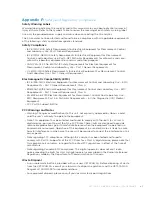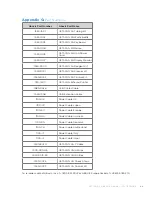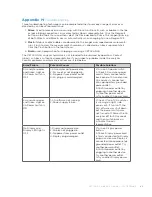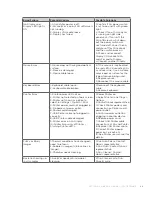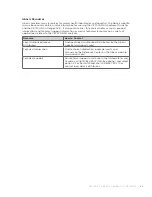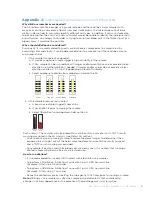
VETSCAN SA USER’S MANUAL
v
1.1 SOFTWARE
|
5 1
Appendix J:
Understanding Urine Dilutions on the VETSCAN SA
Why dilutions sometimes are needed?
The SA reviews real-time images using a microscope and there will be clinical samples with
many cells causing a very dense field of view and stacked cells. The microscope cannot focus
well on a dense field to accurately identify different cell types. In addition, if cells are stacked on
top of one another, the analyzer (and any human) would be unable to identify the individual cells
or particulates. An analogy to consider is: trying to count red blood cells in the thickest part of a
blood smear; it would not be possible.
When should dilutions be considered?
Pre-analysis: It is recommended to grossly evaluate every sample prior to a sample run. By
examining color and clarity, it can be determined prior to a sample run if there will be a dense
microscopic field.
1. Is the sample transparent or opaque?
a. A cloudy or opaque sample suggests high cellularity of the sample.
b. If Yes, sample can be run undiluted. If images and/or quantitative values provide clinical
direction, no further dilution is needed. If images and/or values do not provide clinical
direction, dilute at 1:2, 1:4, or 1:8 depending on level of turbidity.
c. Select appropriate dilution from drop down field on the SA.
Opaque
Cloudy
Very Cloudy
Clear
2. Is the sample brown or red in color?
a. A brown or red color suggests hematuria.
b. If yes, dilute 1:8 prior to running the sample.
c. Select 1:8 dilution from drop down field on the SA.
Post-analysis: The analyzer will also prompt for a dilution after a sample run if a TNTC results
warning was noted in the SA Analysis (see Retest SA section).
• Prior to diluting and re-running a sample, review the dense images to determine if they
provide clinical insight, even if the fields were too dense for quantitative results to report
and a TNTC results warning was provided.
• For example, if bacteria and white blood cells are clearly seen, it is unlikely that running a
diluted sample will yield an alternate clinical decision.
How to run dilutions?
• It is recommended to use only 0.9% normal saline to dilute urine samples.
• To perform a 1:4 dilution: Dilute 1 part urine with 3 parts 0.9% normal saline.
(Example: 0.1 ml urine 0.3 ml saline)
• To perform a 1:8 dilution: Dilute 1 part urine with 7 parts 0.9% normal saline.
(Example: 0.1 ml urine 0.7 ml saline)
• Remix the diluted sample by inverting the tube gently 10-15 times prior to running a sample.
Note:
diluting a urine sample may alter the sample pH and osmolality that could lead to
changes in cellular appearance or the presence of non-pathogenic crystal formation.







